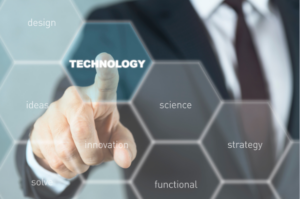Evolving AI: How Artificial Intelligence Is Shaping Our Future
Artificial Intelligence (AI) has rapidly evolved from being a futuristic concept to an everyday reality shaping industries, lifestyles, and even the way we think about human potential. What began as simple rule-based programs in the mid-20th century has grown into complex systems capable of learning, reasoning, and adapting in real time. The journey of AI is not only a story of technological advancement but also one of human imagination, ethics, and adaptation.
From Rules to Learning Machines
In the early days, AI was primarily based on strict rules programmed by humans—systems that could solve problems only within defined parameters. Think of early chess programs: powerful within their domain, but unable to adapt to anything outside of it.
The major shift came with machine learning (ML), where systems could analyze data, recognize patterns, and improve without explicit human instruction. Deep learning, a subset of ML inspired by the human brain’s neural networks, brought breakthroughs in speech recognition, image analysis, and natural language understanding.
Today’s AI doesn’t just follow rules—it learns, adapts, and predicts.

The Present: AI in Daily Life
AI is no longer confined to labs or high-tech industries. It powers everyday tools like virtual assistants, recommendation systems on streaming platforms, fraud detection in banking, personalized healthcare solutions, and even smart appliances at home.
Businesses leverage AI for efficiency—automating tasks, optimizing supply chains, and analyzing consumer behavior. In medicine, AI aids in early diagnosis of diseases, drug discovery, and patient care. In creative industries, AI generates music, writes articles, and designs visuals.
Simply put, AI has become a silent partner in human decision-making, often operating in the background without us even noticing.
The Future: Human–AI Collaboration
The next stage of AI evolution will not be about replacing humans but working alongside us. AI will augment human intelligence, enabling us to focus on creativity, empathy, and strategy while machines handle repetitive or data-heavy tasks.
Emerging fields such as explainable AI (XAI) aim to make machine decisions more transparent, helping us trust AI-driven recommendations. Generative AI will continue pushing boundaries in art, design, and innovation. Robotics integrated with AI will transform industries from manufacturing to elderly care.
Perhaps the most exciting frontier is artificial general intelligence (AGI)—a form of AI that could perform any intellectual task humans can. While still theoretical, its pursuit raises profound questions about consciousness, ethics, and what it means to be human.
Challenges and Ethics
With opportunity comes responsibility. AI’s growth brings challenges:
-
Bias and fairness: AI learns from data, and biased data can lead to unfair outcomes.
-
Job displacement: Automation may disrupt traditional jobs, requiring reskilling and adaptation.
-
Privacy and security: AI’s hunger for data raises concerns about surveillance and misuse.
-
Ethical boundaries: How far should we let AI make decisions in healthcare, warfare, or justice?
These questions highlight that AI’s evolution must be guided by human values, policies, and collaboration between technologists, governments, and communities.
Conclusion
The evolution of AI is more than a technological shift—it is a societal transformation. It challenges us to rethink work, creativity, ethics, and even identity. If nurtured responsibly, AI has the potential to solve some of humanity’s biggest problems, from climate change to healthcare disparities.
As AI continues to evolve, one thing remains certain: it is not just shaping the future—it is the future.
